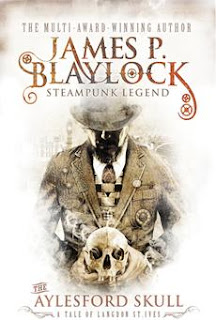
I first met James P. Blaylock in the Fall of 1999 when I took one of his classes at Chapman University for my MFA degree. Sadly, I had never heard of Blaylock before. I was an avid reader of genre fiction already, but I read mostly the classics—Tolkien, C.S. Lewis, Burroughs, Bradbury, Poe—and the stuff I read from contemporary authors was limited to embarrassingly few authors. I quickly remedied that problem, gobbling up Blaylock’s The Last Coin and then going on to read a ton of his short fiction. I found his writing to be unlike any other writer’s. It is a fantastic cross of sci-fi, fantasy, and literary fiction; quirky and funny, but at the same time, it explores very tangible problems that cut to the core of the human condition. I took as many Blaylock classes as I could, absorbing the wisdom he had to offer, and through him I even got a chance to meet Tim Powers, whose work I’d already discovered by sheer coincidence.
After graduating, my literary knowledge expanded and I discovered that Blaylock, along with Powers and K.W. Jeter, were the three progenitors of Steampunk. The term, which was jokingly coined by K.W. Jeter in a letter to Locus in 1987, was used to label the weird brand of Victoriana sci-fi/fantasy the three of them were all writing during the 80’s and into the 90’s. Seminal works of the genre include Homonculus and Lord Kelvin’s Machine by Blaylock, The Anubis Gates, On Stranger Tides, and The Stress of Her Regard by Powers, and Morlock Night and Infernal Devices by Jeter. Since then, the genre has drastically evolved at the hands of a slew of other writers, film makers, video game developers, and counter-culture do-it-yourselfers. So much so, in fact, that many fans of the genre hardly recognize the seminal works as Steampunk.
Read more »




